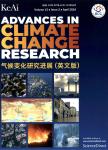An overview of black carbon deposition and its radiative forcing over the Arctic
An overview of black carbon deposition and its radiative forcing over the Arctic作者机构:College of Resources and Environment University of Chinese Academy of Sciences State Key Laboratory of Cryospheric Sciences Northwest Institute of Eco-Environment and Resources Chinese Academy of Sciences Institute of Climate System Chinese Academy of Meteorological Sciences
出 版 物:《Advances in Climate Change Research》 (气候变化研究进展(英文版))
年 卷 期:2016年第7卷第3期
页 面:115-122页
核心收录:
学科分类:0830[工学-环境科学与工程(可授工学、理学、农学学位)] 0709[理学-地质学] 07[理学] 070601[理学-气象学] 0708[理学-地球物理学] 070602[理学-大气物理学与大气环境] 0706[理学-大气科学] 0816[工学-测绘科学与技术] 0704[理学-天文学] 0825[工学-航空宇航科学与技术]
基 金:funded by the Ministry of Science and Technology of China (2013CBA01804) the National Nature Science Foundation of China (41425003, Y51101P1A1) the key project of CAMS: Research on the key processes of Cryospheric rapid changes (KJZD-EW-G03-04) the Opening Founding of State Key Laboratory of Cryospheric Sciences (SKLCS-OP-2016-03)
主 题:Arctic Black carbon Snow Ice Radiative forcing
摘 要:This paper gives an overview of the current understanding of the observations of black carbon(BC) in snow and ice, and the estimates of BC deposition and its radiative forcing over the Arctic. Both of the observations and model results show that, in spring, the average BC concentration and the resulting radiative forcing in Russian Arctic Canadian and Alaskan Arctic Arctic Ocean and Greenland. The observed BC concentration presented a signi?cant decrease trend from the Arctic coastal regions to the center of Arctic Ocean. In summer, due to the combined effects of BC accumulation and enlarged snow grain size, the averaged radiative forcing per unit area over the Arctic Ocean is larger than that over each sector of the Arctic in spring. However, because summer sea ice is always covered by a large fraction of melt ponds, the role of BC in sea ice albedo evolution during this period is secondary. Multi-model mean results indicate that the annual mean radiative forcing from all sources of BC in snow and ice over the Arctic was ~0.17 W m^(-2). Wet deposition is the dominant removal mechanism in the Arctic, which accounts for more than 90% of the total deposition. In the last part, we discuss the uncertainties in present modeling studies, and suggest potential approaches to reduce the uncertainties.



